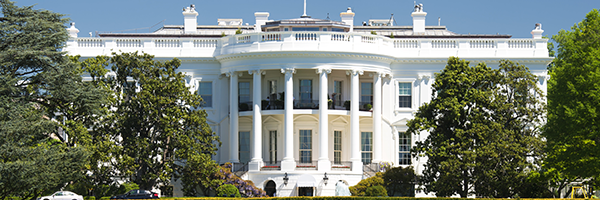Short Term

December 23, 2020 | Daily JAM, Short Term, You Might Have Missed |
On Tuesday President Donald Trump tweeted a video heavily criticizing the recently passed coronavirus stimulus/relief bill–and a huge funding bill to keep the government running–and implying that he could veto the bill. Today, Wednesday, December 23, stocks barely budged. The Standard & Poor’s 500 was up 0.07%. The Dow Jones Industrial Average gained 0.38%. The NASDAQ Composite was down 0.29% and the NASDAQ 100 fell 0.51%. The small cap Russell 2000 picked up 0.87%. The iShares MSCI Emerging Markets ETF rose 1.02%. Why the lack of reaction?

December 17, 2020 | Daily JAM, Morning Briefing, Short Term |
For the week ended December 12, the number of Americans filing initial claims for unemployment in regular state programs rose on a seasonally adjusted basis to 885,000, an increase of 23,000 from the previous week. That was the largest gain in the last three months. A Bloomberg survey of economists had projected 818,000 initial state claims and 5.7 million continuing claims on an adjusted basis.

December 14, 2020 | Daily JAM, Short Term |
I see all the signs of a market that’s moved beyond enthusiasm to excess. This stage in a market is called many things. A market melt. Forming a top. You get the idea. We won’t, of course, know if the current levels constitute a top until we get a sustained downturn. And waiting for that confirming downturn can take a while and be very painful if you’ve tried to time the turn with shorts or Put Options and turn out to have been early. The topping process can go on for a while.

December 8, 2020 | Daily JAM, Short Term |
Senate Majority Leader Mitch McConnell continues to refuse to endorse the $908 billion package and today offered up a new proposal to eliminate his demand to exempt companies from legal liability for coronavirus damages (say, if they lied to workers about infections in their workplace) in exchange for Democrats dropping their insistence of $160 billion of so in aid for states and cities. “It’s my view, and I think it’s the view shared by literally everybody on both sides of the aisle, that we can’t leave without doing a Covid bill,” McConnell said at a news conference. “The country needs it.” Democrats weren’t having any of McConnell’s “compromise.”

December 7, 2020 | Daily JAM, Short Term |
House majority leader Steny Hoyer, Democrat of Maryland, confirmed in a tweet that the House will vote on a one-week spending extension Wednesday to avert a government shutdown on Saturday. “The House will vote on Wednesday on a one-week CR [continuing resolution] to keep government open while negotiations continue,” Hoyer wrote.

December 6, 2020 | Daily JAM, Short Term |
News this week from the Food & Drug Administration on a coronavirus vaccine–and maybe even the start of vaccinations–plus news on action on funding to keep the government open past Friday–plus news on a new coronavirus stimulus package–all this week

December 3, 2020 | Daily JAM, Short Term |
Senate Majority Leader Mitch McConnell and House Speaker Nancy Pelosi spoke Thursday about a new coronavirus relief and stimulus package and about funding the government after the current stop-gap authorization expires on December 11. It’s the first time the leader of the Senate Republicans and the House Democrats have talked since November 3.

December 1, 2020 | Daily JAM, Short Term |
As the numbers on shopping over the Thanksgiving weekend get more concrete, the picture gets a little darker. Fewer Americans shopped during Black Friday weekend, and those who did spent less than they did a year ago.

December 1, 2020 | Daily JAM, Morning Briefing, Short Term |
It may be just talk, but even talk is a step forward for the stalled plan for a new round of coronavirus stimulus and aid. One of the most positive signs is the Republicans in the Senate and House are talking to the White House this time. The window for any action is very narrow since Congress needs to pass something to continue funding the government by December 12 or risk another shutdown. All of the Cares Act provisions for extended unemployment or expanded unemployment as well as those for eviction protection expire at the end of December.

November 30, 2020 | Daily JAM, Short Term |
Will the jobs report on Friday, December 4, be worrying enough to blast Washington out of what increasing looks like another stalemate over funding the government and another coronavirus stimulus bill? Economists generally expect that the jobs report will show that the economy continues to slow under the impact of new economic restrictions intended to slow the rate of coronavirus infections. Right now Congress and the White House aren’t showing much sense of urgency over either the economic pain in the country, which will get significantly worse when just about all the earlier coronavirus stimulus programs expire on December 3, or on passing a bill to fund the federal government past the December 10 deadline.

November 28, 2020 | Daily JAM, Short Term |
Expect a week for positioning for the big news scheduled for next week and the week thereafter. The U.S. Food & Drug Administration’s vaccines advisory committee meets on December 8-10. Pfizer’s application for an emergency use authorization for its coronavirus vaccine is on the agenda. Since none of us has seen the data submitted to the FDA, we don’t know for sure, but Wall Street believes that the advisory committee will recommend approval of the vaccine. That could put the FDA on track to approving the vaccine within any where from a couple of days to a week or two. Various sources in the White House and at Pfizer have said that the vaccine could be on its way to American arms as soon as two days after approval. You can bet that a “Yes” from the advisory committee will move stocks–every bit of positive vaccine news has pushed stocks significantly higher over the last two weeks and there’s no reason to think that any positive FDA news would be any different. The Federal Reserve’s Open Market Committee meets on December 16

November 25, 2020 | Daily JAM, Morning Briefing, Short Term |
The number of Americans filing initial claims for unemployment in regular state unemployment programs climbed by 30,000 in the week ended November 21, the Labor Department reported today, November 25. For the week initial claims in state programs rose to a seasonally adjusted 778,000. Economists surveyed by Reuters had expected 730,000 new claims for the week. This is the second straight week for an increase in new claims for unemployment and adds to other data showing the U.S. economy is slowing under the impact of a new surge in coronavirus infections and a rising number of restrictions on economic activity as states attempt to slow the spread of the virus.










